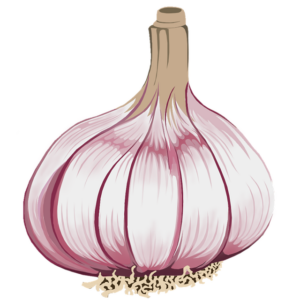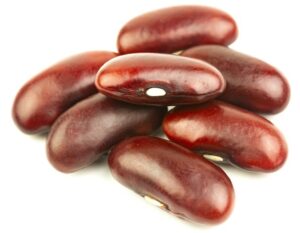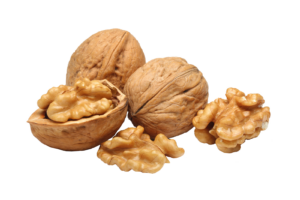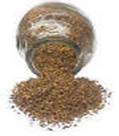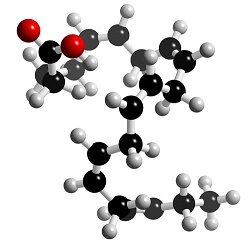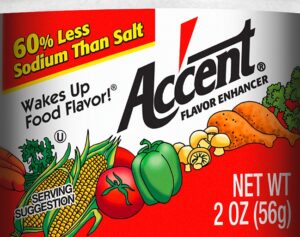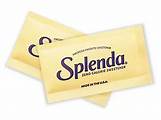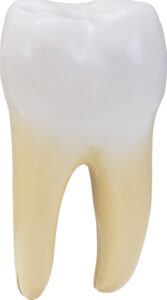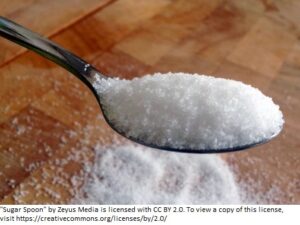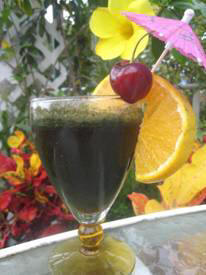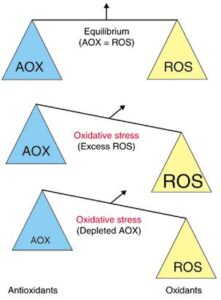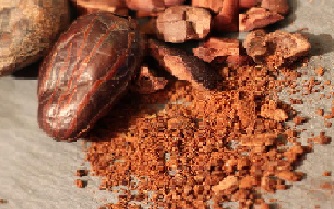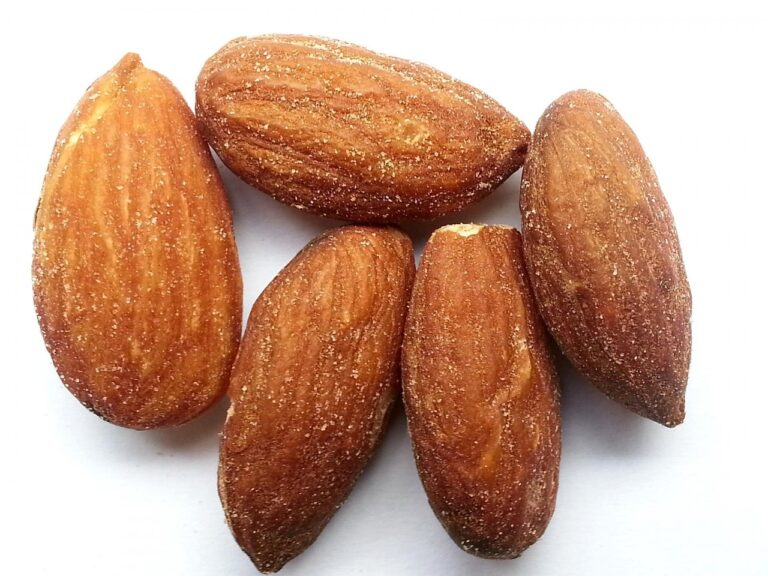
Adequate Folate (Vitamin B9) is essential for health

Folate is a B-vitamin whose adequate intake from the consumption of folate-rich foods is essential for health
Folate prevents neural tube defects in newborns. An adequate folate intake is extremely important for women of childbearing age prior to and during pregnancy. Mothers on a folate-rich Mediterranean-type diet have shown lower risks for baies born with Spina Bifida than those not on this type of diet.
Folate aids the complete development of red blood cells. These cells help carry oxygen around the body. When folic acid is deficient, the red bloods cannot form properly, and continue to grow without dividing.
Folate supports cell production. Especially cells in skin and cells lining exposed surfaces and cavities (E.g. cells lining GI tract and oral cavity). Problems often associated with folate shortage include:
- In the mouth. Gingivitis, cleft palate, and periodontal disease.
- In the skin. Seborrheic dermatitis, vitiligo (loss of skin pigment;
- Cancers of the esophagus and lung, uterus, cervix, and intestine (especially the colon)
Folate reduces blood levels of homocysteine helping prevent CVD and possibly Parkinson’s disease. Folate, B6 and B12 convert potentially harmful homocysteine(a by-product of cellular metabolism) into useful compounds. A high serum homocysteine levelis associated with increased risk of cardiovascular disease, and low intake of folate is a key risk factor for hyperhomocysteinemia. Preliminary research also suggests that high homocysteine levels can lead to the deterioration of DOPAMINE-producing brain cells and may therefore contribute to the development of Parkinson’s disease.
Folate supports nervous system function. In addition to its preventive function in neural tube defects in newborns, a folate deficiency is associatedwith a wide variety of other nervous system problems, including:
- General mental fatigu,depression, irritability, forgetfulness, confusion
- Non-senile dementia,
- Restless leg syndrome
- Nervous system problems in the hands and feet
- Insomnia.
Folate’s link in these conditions may involve its role in the synthesis of neurotransmitters, to provide a proper balance of these message-carrying molecules of the nervous system.
Folate is also considered to:
- Help prevent osteoporosis-related bone fractures. Research teams in the Netherlands and the U.S. confirmed that low levels of dietary folate significantly increases risk of osteporosis-related bone fractures as a consequence of increased homocysteine levels. Both groups found that folic acid reduced the risk of osteoporotic fractures by reducing high levels of homocysteine.
– Rotterdam Study – 2406 subjects aged 55 years or older;those with the highest homocysteine levels, whether men or women, almost doubled their risk of fracture.
– The Boston team – found that risk of hip fracture nearly quadrupled in men and doubled in women in the top 25% of homocysteine levels.
McLean, R.R., et al. 2004. Homocysteine as a predictive factor for hip fracture in older persons. New England Journal of Medicine 350(May 13):2042-2049. PubMed.
van Meurs, Joyce B.J., et al. 2004. Homocysteine levels and the risk of osteoporotic fracture. New England Journal of Medicine 350(May 13):2033-2041. PubMed.
- Help prevent dementias. E.g. Alzheimer’s disease. A 2004 study evaluated 228 subjects. In those whose blood levels of folate were lowest, the risk for mild cognitive impairment was more than tripled, and risk of dementia increased almost four fold.
Pierluigi Quadri et al, Homocysteine, folate, and vitamin B-12 in mild cognitive impairment, Alzheimer disease, and vascular dementia. Am J Clin Nutr July 2004 vol. 80 no. 1 114-122 Link
Folate has 3 main components. PABA, glutamic acid and pteridine.
What’s the difference between folate and folic acid?
“Folate”and “Folic Acid” are terms used interchangeably, but are in fact, significantly different
Folate is a general term for a group of natural water soluble B-vitamins,known as B9, found in foods. Folate refers to the various tetrahydrofolate (THF) derivatives naturally found in foods, such as green vegetables/leaves, beans and brewer’s yeast. Folate is the natural form that enters the main folate metabolic cycle, in the mucosa of the small intestine
Folic Acid under Scrutiny,British Journal of Nutrition (2007), 98, 665-666
Folic acid refers to a synthesized, oxidized form of natural folate. Since its 1943 debut, it has been used in this crystallized (allbeit stable) form, in dietary supplements and food fortification (In 1996, the FDA mandated that grain-based foods, such as bread and cereal, be fortified with folic acid to reduce neural tube defect risk in fetuses during early pregnancy );
- In most (especially younger) people, folic acid can be converted by the liver back into folate. Unlike natural folate, ingested folic acid undergoes initial reduction (by dihydrofolate reductase/DHFR)and methylation to tetrahydrofolate (THF) in the liver.
- Under certain circumstances unmetabolized folic acid can build up in circulation. With possible health problems:
- Conversion efficiency declines with age
- An estimate of up to 5% of people have genetic defects in metabolizing folate from folic acid
- Low activity of DHFR enzyme in the liver combined with a high intake of folic acid. Several studies have reported the presence of unmetabolized folic acid in the blood following the consumption of folic acid supplements or fortified foods, which has been linked with several health problems:
- May accelerate cognitive decline in some older individuals;
- Increased risk of childhood asthma born to folic-acid supplemented mothers;
- Increased risk of colon and rectal cancers and accelerated growth of pre-existing cancers – Prenatal and postnatal supplementation of folic acid in mothers resulted in the occurrence of higher numbers of cancer tumors. The Prostate, Lung, Colorectal, and Ovarian (PLCO) Cancer Screening trial linked folic acid intake with 20% to 32% increased risk of breast cancer in women consuming more than 400 microg/d supplemental folic acid.
Kim YI. Does a high folate intake increase the risk of breast cancer? Nutr Rev. 2006 Oct;64(10 Pt):468-75. PubMed
Chang SC, Leitzmann MF, Johnson KA, Johnson C, Buys SS, Hoover RN, Ziegler RG. Folate intake, alcohol use, and postmenopausal breast cancer risk in the Prostate, Lung, Colorectal, and Ovarian Cancer Screening Trial. Am J Clin Nutr. 2006 Apr;83(4):895-904. PubMed
Hilary J Powers (2007). Folic acid under scrutiny. British Journal of Nutrition, 98, pp 665666 doi:10.1017/S0007114507795326
Conversely, dietary (i.e. natural) folate is actually protective against breast cancer
Shrubsole MJ, Jin F, Dai Q, Shu XO, Potter JD, Hebert JR, Gao YT, Zheng W. Dietary folate intake and breast cancer risk: results from the Shanghai Breast Cancer Study. Cancer Res. 2001 Oct 1;61(19):7136-41. PubMed
- Unmetabolized folic acid in the blood is associated with the immune system’s decreased natural killer (NK) cytotoxicity. NK cells have a role in tumor cell destruction, suggesting a way in which excess folic acid might promote existing premalignant and malignant lesions.
Aron M. Troen et al, Unmetabolized Folic Acid in Plasma Is Associated with Reduced Natural Killer Cell Cytotoxicity among Postmenopausal Women (2006) J. of Nutr. LInk
Folate from natural food sources is best
Excellent sources of dietary folate. Include vegetables such as romaine lettuce, spinach, asparagus, turnip greens, mustard greens, parsley, collard greens, broccoli, cauliflower, beets, asparagus, Brussels sprouts, bok choyand lentils.Also calf and chicken liver (choose organic), and brewer’s and baker’s yeast
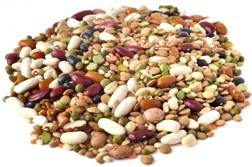
Other good sources. include corn, beets, tomatoes, dried or fresh beans and peas, and some fruits, including oranges, grapefruit, pineapple, cantaloupe, honeydew melon, banana, raspberries, and strawberries.
Fresh is best. Naturally occurring folates break down quite rapidly with heat, cold, light, even when they’re still in the food.
Folate Deficiency Symptoms
In its association with the nervous system:
- Irritability
- Mental fatigue
- Forgetfulness
- Confusion
- Depression
- Insomnia.
In its connection to circulation and red blood status
- General fatigue
- Muscular fatigue
In its role protecting the lining of body cavities
- GI tract symptoms (E.g. diarrhea)
Neutrophilic hypersegmentation index (NHI) test for folate status
This inexpensive blood test can confirm your folate levels
The NHI indicates whether the most rapidly dividing cells in our bodies have enough folate – neutrophils, other circulating blood cells, and the cells lining our GI tracts are the most rapidly dividing cells in our bodies. The NHI determines what percentage of your body’s neutrophils ( type of white blood cell) were supplied with an optimal amount of folate while they were growing and maturing.The optimum being100% percent.
Dr. Jonothon V. Wright of the Tahoma Clinic explains the details of this test:
“When neutrophils are “born”and “incubate”in bone marrow, their chromosomes—DNA—arrange themselves into five segments. A final step in neutrophil DNA maturation is re-arrangement of those five segments into three. Normal folate metabolism is a key to this final step. Very shortly after the five-to-three segment DNA re-arrangement, the fully mature neutrophil is released from the bone marrow into the bloodstream, where it lives out its months-long life doing its job—one very important part of which is defending our bodies against germs.
But if there isn’t enough folate, the neutrophil’s DNA stays in five (instead of three) segments. When the neutrophil is needed, it’s released into the bloodstream anyway, where it’s called a hypersegmented (too many segments) neutrophil. Fortunately, a hypersegmented neutrophil can still fight germs as well as a “regular,”three-segmented neutrophil.”
A technician counts the number of DNA segments in each neutrophil -by examining a blood sample under a microscope. The “hypersegmentation index”is the percentage of five-segment neutrophils counted in a total of 100 neutrophils.
A shortage ofany of folate, vitamin B12, or zinc (the three key nutrients for mainaining normal keeping cell division) is likely to show in rapidly dividing cells first –an indication that the rest of our body also has enough folate.
Supplementing Folate
You can supplement with folate if your dietary intake is inadequate. There are two types of OTC natural folate available:
1. Folinic Acid (not folic acid). Sold OTC as calcium folinate, or by prescription as Leucovorin® (contains FD&C yellow #10 and FD&C blue # 1)
2. 5-MTHF (5-methyltetrahydrofolate). Sold OTC (but more expensive than calcium folinate)
- Avoid products with labels that list “folic acid”or even “folate” (since it is still synthetic folic acid). Most multivitamins contain folic acid, not folate;
- Good brands include: Solgar, Designs for Health, Thorne, Metabolic Maintenance, Pure Encapsulations. Look for products that contain the Metfolin brand, or list “5-methyltetrahydrofolate”or “5-MTHF”on the label.
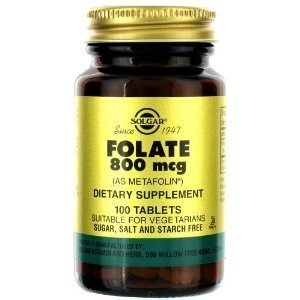
Add B12 to a folate Supplement. Not only is B12 a cofactor of folate, but folate can also mask some B12 deficiency symptoms.
How much folate to supplement
- Women planning on becoming pregnant. 800 – 1000 mcg of folate /day for several months BEFORE the start of pregnancy(Unless you’re consuming chicken or calf’s liver and substantial amounts of leafy greens on a regular basis )
References
Dr. Wright and Chris Kresser explain differences between folate/folic acid: http://tahomaclinicblog.com/folic-acid/ http://chriskresser.com/folate-vs-folic-acid
The world’s healthiest foods (folate): http://www.whfoods.com/genpage.php?tname=nutrient&dbid=63







